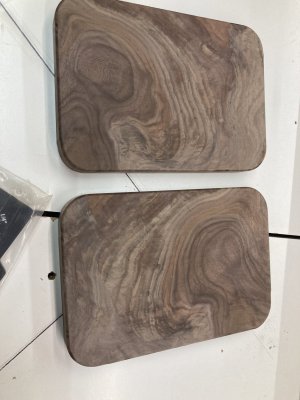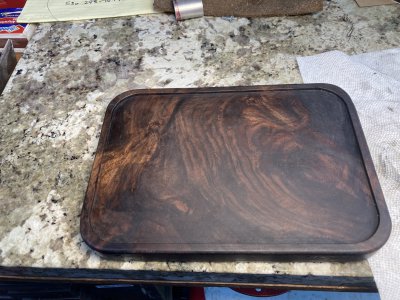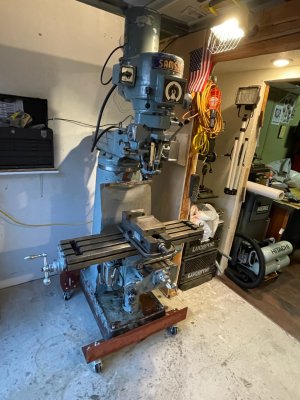I got a great deal on a Rockwell EFI drill press, really a brute. What is impressive is the Z height...and that's needed because it came with drawers full of MT3 and MT4 taper drills, which are huge. So I found that I had to fairly frequently reposition either the head or the table, and cranking either was relatively tedious. About then, I got an ad from Vevor for a Bridgeport X axis power feed, for about $125. I've paid about 3 times that much for several X axis and Z axis units from other suppliers, and frankly they all looked identical, with the same pretty useless instructions. Seemed like it was worth a try to adapt that to the table on the drill press. Here's a look at the drill press:
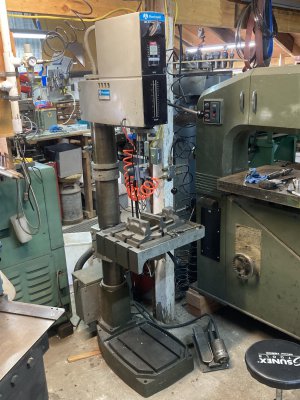
It seemed like a straightforward project to bolt the drive onto the crank shaft, and I suppose it was, but there were issues. The table hand crank drives a worm that runs an idler gear that mates with the vertical rack on the center column, and it has a slight angle built in, measured at 3.5 degrees in one axis and about 0.3 degrees in the other. I made an adapter block to compensate for that, and after a surprising lot of fiddling to prevent binding, and to get the right replacement shaft dimensions, and to get the right shim placement, it works really well. It has plenty of power to move a very heavy table, a Heinrich(?) vise and whatever is on it.
Here's what the result looks like:
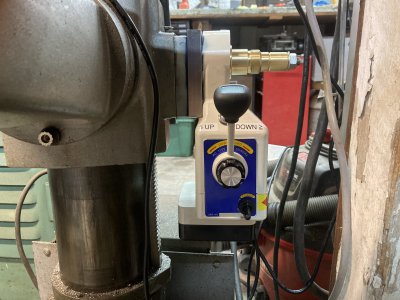
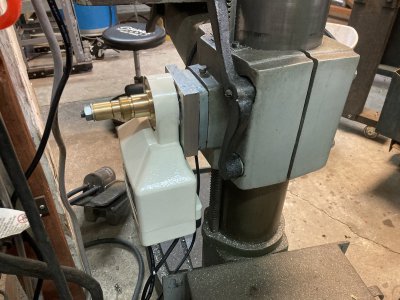
Yep, it's a little goofy looking, lacks a hand crank, but wow, it works. Perhaps I'll machine a more elegant adapter block someday, but it seems unlikely.
A feature that I need to add is the upper and lower travel limits. It's not clear exactly how to do this, but that's a good project in itself.
)
